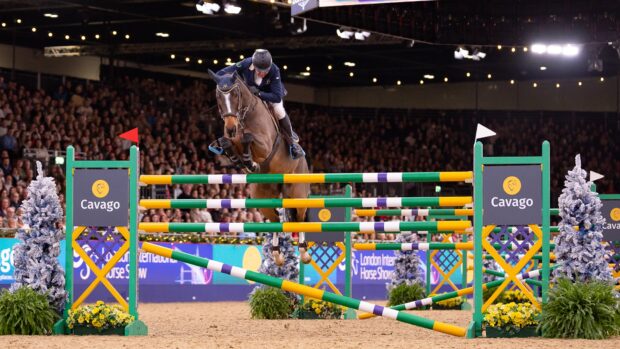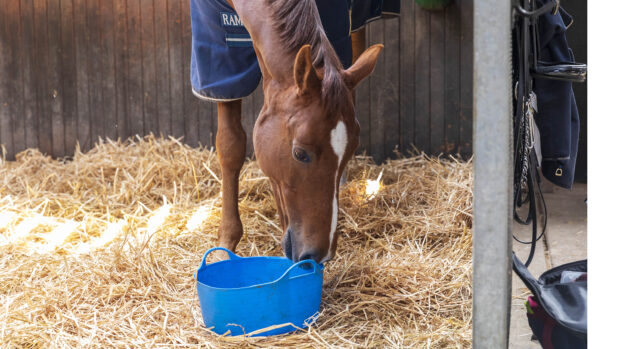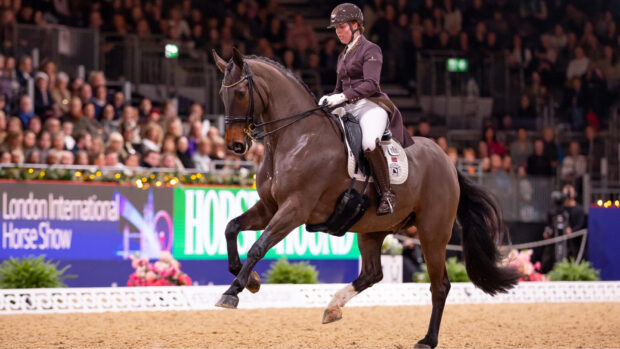The canter pirouette is one of the ultimate tests of correct training. Leslie Bliss talks to Kyra Kyrklund about her 20-year journey to master this pinnacle in achievement.
“The canter pirouette is a bit like a puzzle,” says dressage legend Kyra Kyrklund. “You have to have all the pieces of the puzzle. Then you have to put them all together. Suddenly, you see a picture. For a good pirouette, you need every piece of the puzzle to be in the right place.”
To give an idea of how difficult it is to perform a good canter pirouette, Kyra says: “It has a coefficient for a reason. For many years, I rode bad pirouettes. It was at least 20 years before I understood them. When I started out, you could get away with a bad pirouette, but today there are too many good horses, trainers and riders.”
Kyra reflects on why she considers that some of her horses’ pirouettes weren’t up to scratch: “Maybe the collection wasn’t easy enough for them. For Matador, it was easy, so he did good pirouettes, but at the time, I didn’t ask myself why. What I have learnt is that you can improve every horse’s pirouette, but you can’t make every horse into a ‘pirouette master’.”
The aim
The FEI definition of a canter pirouette is, “a turn of 360 degrees executed on two tracks, with a radius equal to the length of the horse and the forehand moving around the haunches. The forefeet and the outside hind foot move around the inside hind foot. The inside hindleg describes a circle as small as possible. The horse, slightly bent in the direction in which it is turning, remains on the bit with a light contact, turning smoothly around, maintaining sequence and timing of footfalls of that pace. The poll remains the highest point during the entire movement.”
Common mistakes
SO, what can go wrong? Well, quite a lot: loss of rhythm, hind feet jumping together – known as “hopping” – the hind feet making a circle larger than one meter, the horse’s head tilting, the horse dropping behind the bit, coming too high in the neck and “climbing”, the horse “spinning” and therefore completing the turn in less than six to eight steps, changing behind or having a backward tendency.
You get the idea; it’s jolly difficult. But that’s because it’s meant to be. It’s up there with piaffe and passage at the pinnacle of the highest level of achievement.
Collection, collection, collection
In Kyra’s experience, there is one main reason for a “bad” pirouette: “Lack of collection and thereby self-carriage.”
She clarifies what she means by collection: “It is not something you turn on or off. You have different degrees of collection. The more collected the canter, the easier it is to ride a small pirouette.
“You can train a horse to have the ability to collect, but every horse has a limit as to how much weight he can carry on his hindlegs and therefore how much he can come up in front, depending on his conformation. Not every horse will be able to perform a good pirouette in the same way that not every horse can do a good extended trot or half-pass.
“It is most important not to overwhelm a horse. If his canter is not collected enough, the pirouette will be hard work for him. Then he will resist, your aids will have to be too strong and he will shut down.
“If a small pirouette is something a horse cannot do physically, it is better to ride a bigger pirouette, rather than trying to force him to make it smaller and smaller. If you force him, you may end up earning a four instead of a six or seven.”
Spot on
Kyra explains how she judges when a horse is ready to start work on the canter pirouette: “Whatever the movement – whether it is flying changes, piaffe, passage – I ask myself, what do I need the horse to be able to do in order to perform it? For this, I need the horse to be able to canter almost on the spot while keeping the same rhythm. He has to be straight in his body in this canter, and I have to be able to position his head and neck where I want; I need him to be able to lengthen his neck and lower his head when I ask.”
To quantify the degree of collection, Kyra says: “Before the horse can do a good pirouette, he should be able to canter on a straight line with a length of stride of no more than half a meter. For a full pirouette, the length of stride should be about 20cms.”
On the turn
As the canter pirouette is a culmination of many years of correct training, it goes without saying that the horse must respond to the lightest of aids, which Kyra describes as at “whisper” level.
In addition to that, she points out that the most important movement to master is the much-maligned walk pirouette: “See it as preparation for the canter pirouette. You have walk pirouettes in tests at lower levels for a reason; it’s how you teach the horse to turn. Get the walk pirouette wrong, and the canter pirouette will be wrong.
“As with the canter pirouette, if you don’t have the horse collected enough, it will be difficult for the horse and you will end up ‘pushing’ him round. Often there is a lack of direction from the inside rein. Imagine you are driving the horse. If you want to turn right, you have to use the right rein.”
At the end of the day, it’s all about identifying which bit of the puzzle is missing. There is no point repeatedly riding a bad pirouette.
“You have to analyse what the problem is and then work on that problem,” she says. But there is good news as Kyra concludes: “Even if the horse has learnt it wrong, with methodical training you can ‘reprogram’ him.”
Exercises to help you master the canter pirouette
Master the walk pirouette to the point that you can turn two steps then walk straight, turn two steps and walk straight again.
Practise the transitions walk-canter-walk-canter-walk with the horse responding immediately to the lightest aids.
From a highly collected walk, go into counter-canter, then back to collected walk:
1. Do this along a wall to start with. The initial aim is to get a good response to light aids.
2. Then work on straightness, using the wall or fence to help you.
3. The next step is to use the exercise to work on collecting the canter stride more.
4. Then try to let the horse reach down with his neck. Keep the contact on the inside rein while half-halting with the outside rein, then let the neck stretch down. You will not be able to lengthen the horse’s neck down while maintaining the collected canter if your leg aid is too strong. This exercise ensures the horse not only responds to light aids, but is also in self-carriage.
5. Repeat to achieve even shorter canter steps.
6. Once you can perform this exercise down the centre line while keeping the horse straight, you are ready to ride a pirouette.
Top tips for riding a canter pirouette
Watch videos of the world’s top riders performing pirouettes. Then video yourself and check your horse’s canter is collected to the same extent.
Kyra recommends learning from a schoolmaster: “The best teacher is a good horse. If you can experience how it should feel, then you know what you are striving for.”
You might also be interested in:

14 things your trainer might have said — warning: sense of humour required

Rider biomechanics: 13 things to bear in mind if you want to be a good rider

7 polework exercises to keep your horse interested

Subscribe to Horse & Hound magazine today – and enjoy unlimited website access all year round
Horse & Hound magazine, out every Thursday, is packed with all the latest news and reports, as well as interviews, specials, nostalgia, vet and training advice. Find how you can enjoy the magazine delivered to your door every week, plus options to upgrade your subscription to access our online service that brings you breaking news and reports as well as other benefits.



